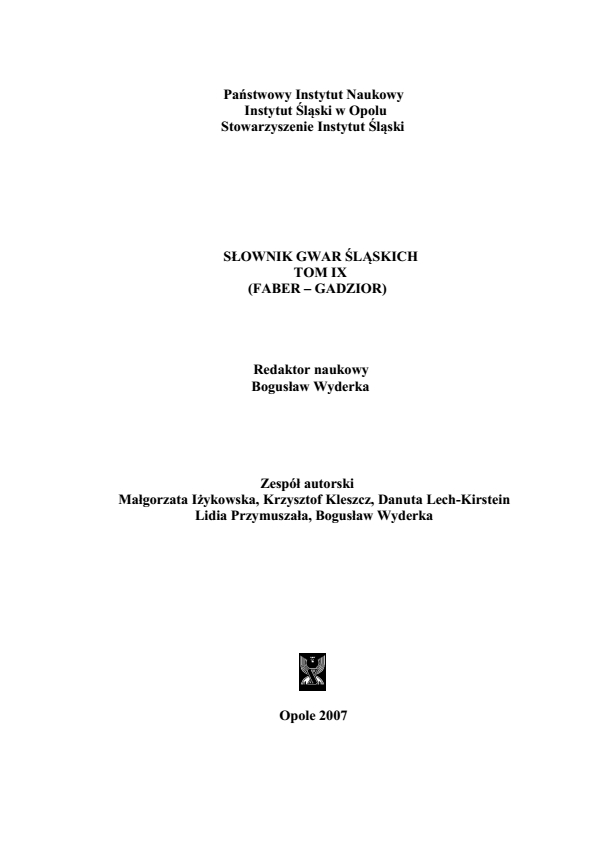
Słownik Gwar Śląskich, tom IX (FABER - GADZIOR)
"Glossary of Silesian Dialects" is the result of many years of scientific work of several generations of linguists from the Silesian Institute in Opole, Poland.
More...We kindly inform you that, as long as the subject affiliation of our 300.000+ articles is in progress, you might get unsufficient or no results on your third level or second level search. In this case, please broaden your search criteria.

"Glossary of Silesian Dialects" is the result of many years of scientific work of several generations of linguists from the Silesian Institute in Opole, Poland.
More...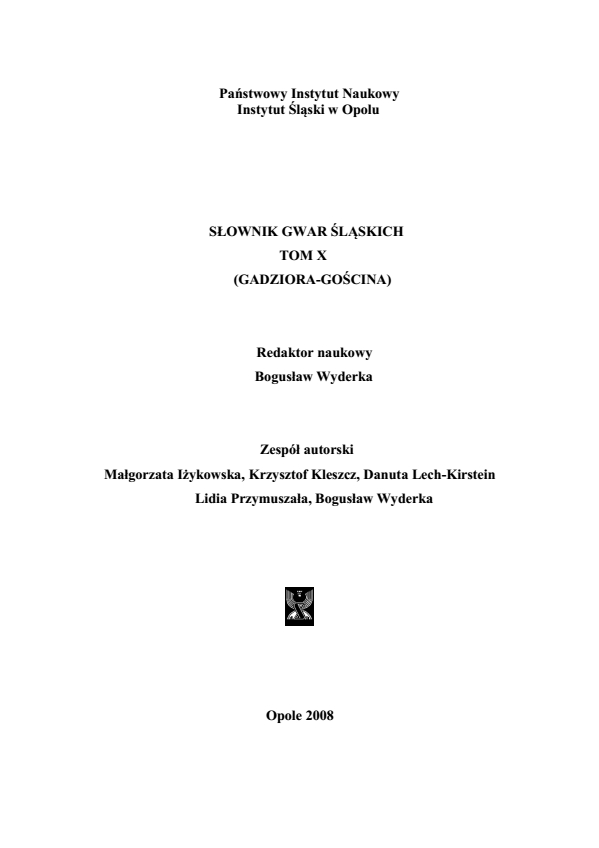
"Glossary of Silesian Dialects" is the result of many years of scientific work of several generations of linguists from the Silesian Institute in Opole, Poland.
More...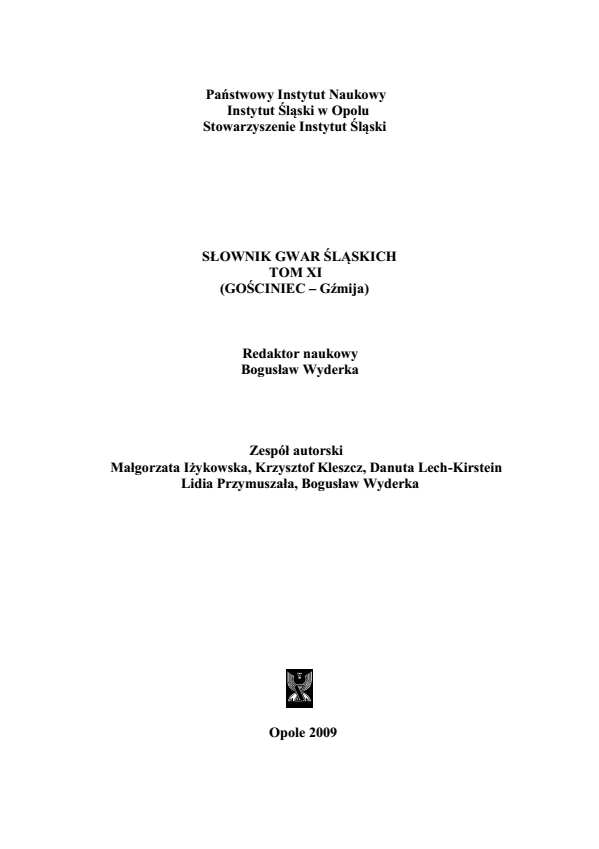
"Glossary of Silesian Dialects" is the result of many years of scientific work of several generations of linguists from the Silesian Institute in Opole, Poland.
More...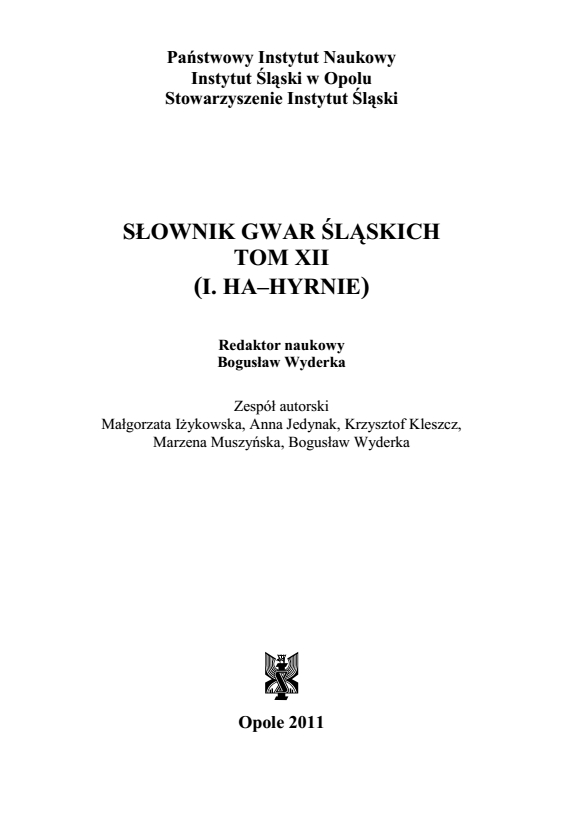
"Glossary of Silesian Dialects" is the result of many years of scientific work of several generations of linguists from the Silesian Institute in Opole, Poland.
More...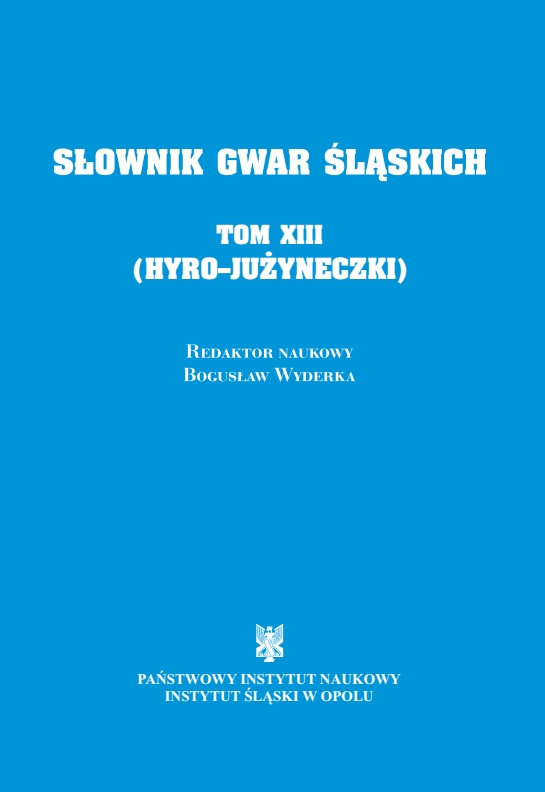
"Glossary of Silesian Dialects" is the result of many years of scientific work of several generations of linguists from the Silesian Institute in Opole, Poland.
More...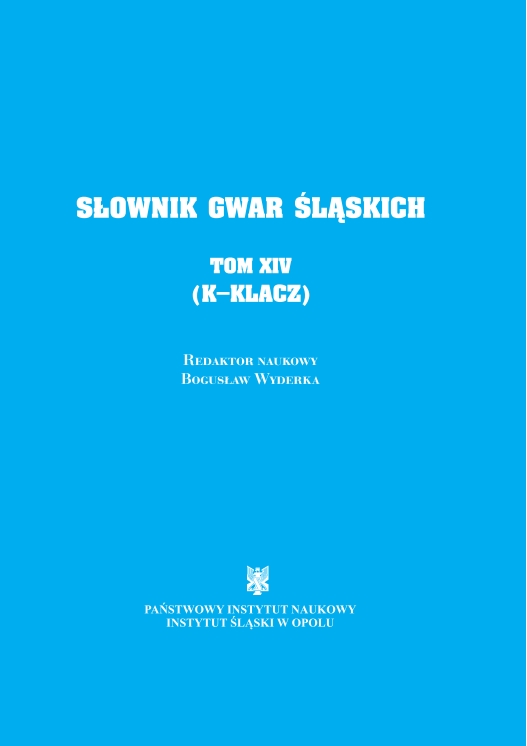
"Glossary of Silesian Dialects" is the result of many years of scientific work of several generations of linguists from the Silesian Institute in Opole, Poland.
More...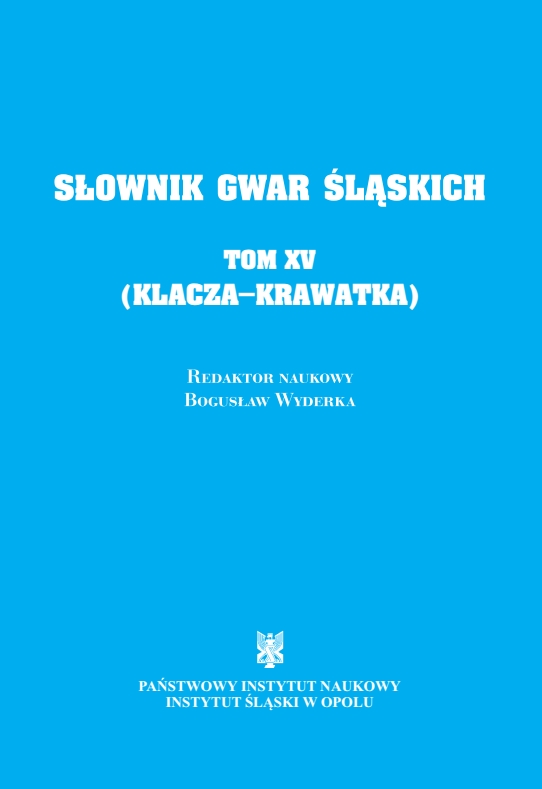
"Glossary of Silesian Dialects" is the result of many years of scientific work of several generations of linguists from the Silesian Institute in Opole, Poland.
More...
In this work, consisting of 7 chapters (I. An outline of the early history of linguistic researches on the ethnogenesis of the Slavs; II. Linguistics and other disciplines conducting researches on the early history of the Slavs; III. The hydronymic aspect of research on the ethnogenesis of the Slavs; IV. Slavic ethnonyms and anthroponyms; V. The phonetic differentiation of Slavic; VI. The role of vocabulary in research on the ethnogenesis of the Slavs; VII. The stages preceding the historical past of the Slavs), various theories and hypotheses based on linguistic facts and connected with the ethnogenesis of the Slavs are presented and analysed. The final conclusions based on the research could be stated as follows: The Slavs broke away from the great Proto-Indo-European family; on the basis of linguistic facts we cannot, however, situate their original homeland without some hesitation, nor do we know exactly how the process of differentiation took place and in what way the various language groups emerged. There exist many Balto-Slavic linguistic connections that point to a close or common development of these two language groups. However, on the basis of linguistic facts alone, it is difficult to determine the location of the original homeland of the Slavs and Balts. At some point these two ethnic groups separated; we cannot, however, state the reason for this break, nor what factors brought about the development of linguistically distinct Slavic. From the linguistic data one can assume that at an earlier points in history there existed contacts between Slavic, Italic and Germanic languages, but where and when it occurred has until now not been thoroughly explained. The presence of Celtic traces in the Slavic languages, which has been variously interpreted (some linguists maintain that in the remote past the Slavs could have been in contact with the Celts) could be analysed only with difficulty since knowledge about Celtic dialects is scarce. There undoubtedly existed some Slavic-Iranian connections, but it is difficult at present to determine the scale and character of these contacts. Further studies in this field are recommended. In the case of contacts between the Slavs and Germans it is very important to draw up a detailed chronological chart of the various phases of the contacts. Here linguists encounter great problems owing to a lack of sufficient criteria to separate the Gothic from the Proto-German linguistic layer. At present we are not in a position to determine unequivocally the location of early Slav homelands either in the light of hydronyms, or through the analysis of Slavic ethnonyms or botanical and zoological terminology, or on the basis of contemporary lexical divisions. We do know that the real Slavs, not the supposed ones, appear on the historical stage in the sixth century A. D., whereas the reconstruction of the early Slavic phonetic and morphological system points to the extreme uniformity of the Proto-Slavic language. On the basis of various data, one can thus maintain that the phonetic differentiation of the Slavic language occurred in the second half of the first millenium A. D., when the Slavs suddenly began to expand, occupying sizeable areas of southern, north-eastern and north-western Europe. One can thus speak of a demographic explosion which in turn brought about an expansion of a Slavic ethnos formerly centered on a much smaller area. Pre- and post-war researches have proposed whole range of solutions to the difficult problem of Slavic ethnogenesis. The author of this work refrains from providing more detailed conclusions because she claims, on one hand none of the existing theories is convincing and on the other she is of the opinion that on the basis of the linguistic facts it is impossible to carry out a full reconstruction of the prehistory of the Slavs.
More...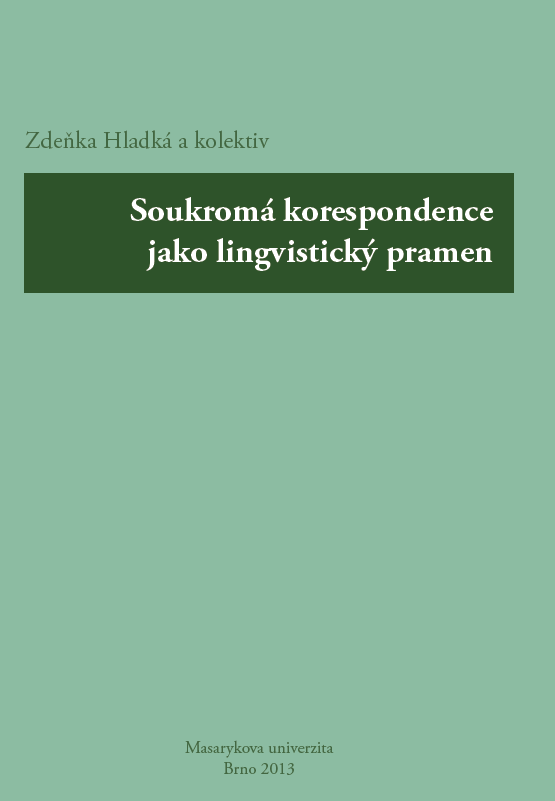
Private letters belong to most interesting materials, as far as their language is concerned. This book presents an insight into contemporary methodological approaches to a linguistic treatment of these materials.
More...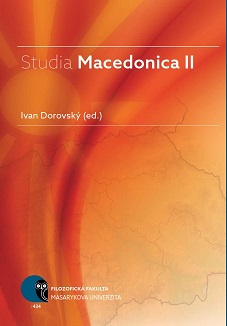
The article deals with lexical borrowings in Old Church Slavonic, particularly with borrowings from Greeks, from the point of view of their etymological origin, meaning and further spreading in other Slavonic languages. On examples from semantic field “architecture” it is shown that the borrowings in Old Church Slavonic constitute a peculiar part of the lexicon the sorting of which does not have a simple solution according to generalizing rules.
More...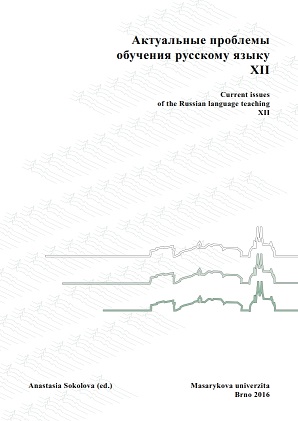
In article present an attempt to consider the city name Elista in cultural and didactical aspects in language teaching. It is established that the city name Elista in language consciousness of Kalmyks is used in its direct meaning and in metaphorical value. The name Elista and names of intracity city objects can be used in quality of local historical material in Russian Elista in cultural and didactical aspects in teaching Russian and Kalmyk as foreign languages.
More...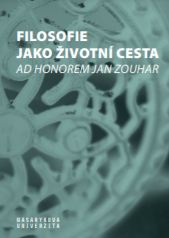
The author investigates the first name Jan (John), its modifications and usage on the territory of today’s Czech Republic. On the basis of rich anthroponymic sources she has proved that the name Jan has belonged among the most frequently used names in the Czech lands since the 12th century and has kept this status to the present day. Numerous hypocoristic modifications of this name have served the purpose of distinguishing individuals bearing the same official name. Today, they still exist as both surnames (Janáček, Janda) and hypocoristic forms of first names (Jenda, Honzík) used in informal contexts.
More...
The study deals with the development of linguistic, ethnic and international relationships in Moravia in 1848–1918 and their specific features. The focus is mainly on the complex relationships between Czech-speaking and German-speaking inhabitants of Moravia and the aspects that played a key role in them. These included a complicated settlement situation given by the mixing of Czech and German inhabitants (the numerous ‘German linguistic islands’), the economic influence of Jewish inhabitants on international relations in linguistically diverse cities, the impact of social and economic status of various groups of inhabitants on their voting and political participation, the unevenness in the promotion of national identity and the effects of Czech-German international compromise of 1905. The application of the principle of personal autonomy led to alleviation of international tensions as well as an increased demand for legal determination of nationality.
More...
This article describes Russian and Polish polyprefixation on the material of the group of verbs of silence. The analysis of historical and modern dictionaries combined with the functional-analytic approach to the text enable us to identify the hall marks of this language phenomenon in the Russian and Polish languages, to identify the most productive secondary prefixes and the specifics of their functioning.
More...
The paper is devoted to the word formation of diminutive forms of nouns of the neuter gender (NG) in Russian and Czech. The paper presents diminutive suffixes of NG nouns in Russian and Czech according to grammars, as well as derivational dictionaries of both languages. In the last part of the paper, corpus data is provided regarding diminutives formed from the words слово, окно / slovo, okno that belong to the basic vocabulary of both languages.
More...
Příspěvek se zaměřuje na tvorbu pracovních listů pro výuku českého jazyka bilingvních žáků 6.–9. třídy, jejichž prostřednictvím si mohou bilingvní děti upevňovat český jazyk. Cílem je vysvětlit danou problematiku a související pojmy, a především usnadnit bilingvním jedincům práci ve výuce českého jazyka prostřednictvím procvičovacích listů, které mohou sloužit jako doplňující materiály při učení, opakování i automatizaci dané látky.
More...
V příspěvku se na základě diplomové práce seznámíme s alternativními výukovými metodami ve výuce českého jazyka a literatury na střední škole. Nejprve se zaměříme na téma a cíl příspěvku, krátce si popíšeme program RWCT, třífázový model myšlení a učení E-U-R a definujeme kritické myšlení spolu se stručným přehledem možných metod, které lze ve výuce užívat. Stěžejní část příspěvku bude věnována modelovým hodinám, na nichž prakticky ukážeme práci s alternativními metodami.
More...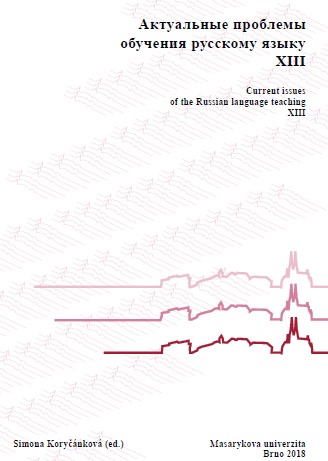
The presentation explores the issues of cultural closeness and distance in relation to foreign language studies. The presenter first shares theoretical views of the topic, especially with focus on Czech and Russian cultures.Then she presents her research findings on attitudes to Russia and the Russian language collected among students of Russian and analyzes them with respect to the students' motivation to study the language.
More...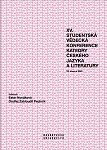
V příspěvku se soustředíme na srovnání učebnic pro žáky s OMJ a pro druhý stupeň ZŠ. Ty jsou aktuálně dvě, a to Levou zadní I. a Česky krok za krokem 1. Budou rozebrány z hlediska gramatiky a slovní zásoby pro psaní textů a srovnány dle toho, jak korespondují se současným kurikulem pro češtinu jako druhý jazyk pro základní vzdělávání. Ve výsledku se zaměříme zejména na to, jaké texty jsou po probrání učebnic žáci schopni napsat.
More...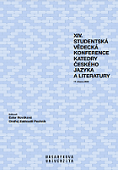
Příspěvek se zabývá pracovními listy určenými žákům 9. ročníků, které propojují nenásilnou komunikaci a tři oblasti výuky českého jazyka a literatury – komunikační a slohovou výchovu, literární výchovu a jazykovou výchovu. Krátce shrnuje poznatky o nenásilné komunikaci a jejích zakladatelích. Přináší pohled na výsledky pilotního testování zmíněných pracovních listů v praxi.
More...